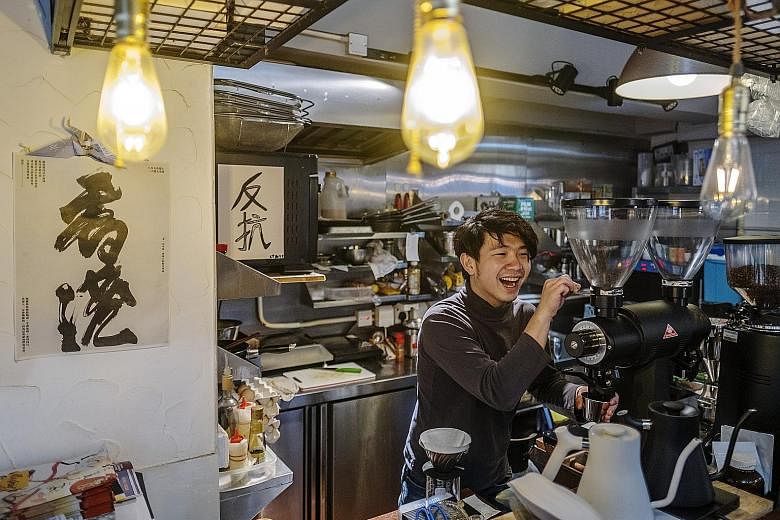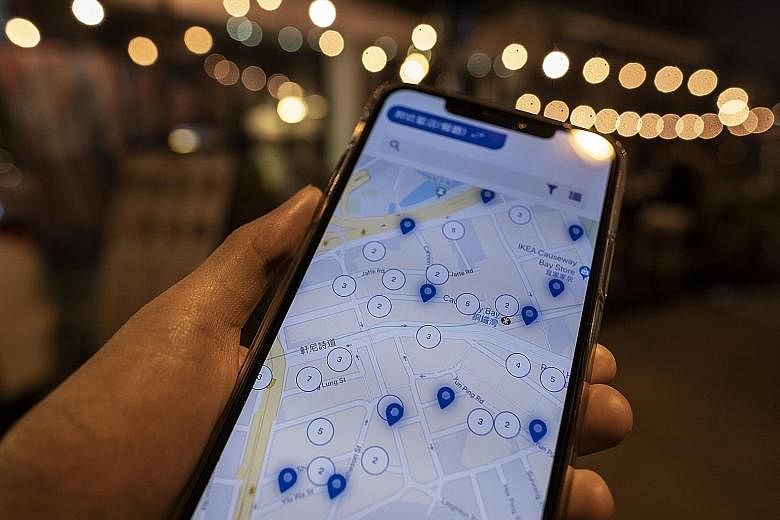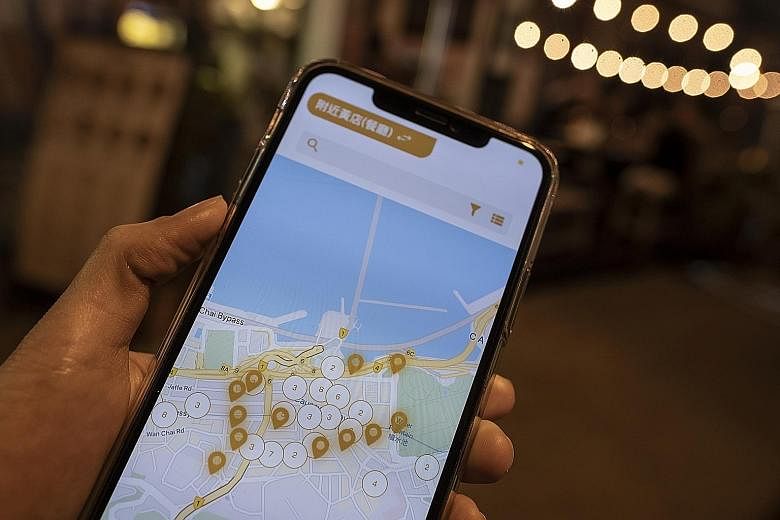HONG KONG • In deciding where to dine out in Hong Kong these days, many residents are turning to a Yelp-like mobile app: not for reviews of food or service, but to separate "yellow" from "blue" eateries.
After more than seven months of unrest, even choosing a restaurant has become political in Hong Kong.
Of some 3,000 eateries listed on the app, more than 1,300 are yellow and 1,600 are blue - including cafes, tea places and snack shops.
The yellow hue represents outlets viewed as pro-democracy or supportive of the anti-government protests, a link dating back to the city's Umbrella Movement in 2014. Blue refers to outlets with pro-government or pro-Beijing leanings.
The effort to politicise restaurants, many of which are small and locally owned, is part of the protest movement's strategy of forcing businesses and residents to pick sides as they pressure the government for more freedoms.
It does not matter even if some shop owners only pretend to be yellow - something which is occurring more amid the blue boycott - as this helps keep up the protest momentum, said Mr Kelvin Lam, a former Greater China economist at HSBC and now a member of the District Council. "That's already a good thing to have in this environment."
While economists say the strategy is unlikely to have a significant economic impact, boycotting businesses linked to the police is exacerbating tensions in the former British colony.
The app, "WoLeiEat", which means "to eat with you" in a mish-mash of Cantonese and English, was developed by a 25-year-old information technology worker who asked to be identified only by his first name, King.
Available to Android phone users since last October and iPhone users in November, it has had about 600,000 downloads in three months, with 70,000 active users a day, he said.
Mr King, who is pro-democracy, said he wants people to use the app to "tell the government what we want". He is now expanding the list to include other retailers, such as beauty salons and stationery shops.
The colour coding is based on whether businesses have supported a general strike and whether they help protesters, such as by providing free food. A higher yellow score is awarded to outlets seen as actively supporting the pro-democracy protests.
Mr Tommy Wu, a senior economist at Oxford Economics Hong Kong, said the yellow versus blue divide is "more about demonstrating one's political ideology than making a real impact" on the economy.
But even with the help of the WoLeiEat mobile app, customers may find distinguishing a yellow restaurant from a blue one tricky as there is no precise definition of what makes a business "yellow" or "blue", and people contributing to reviews often make arbitrary remarks. Being listed as a blue shop also puts one at risk of becoming the target of vandalism.
Ms Vicky Tam, a Hong Kong professional who is getting married, illustrates the divide.
She has switched her wedding cake order - worth about HK$8,500 (S$1,500) - from Maxim's Cakes, the city's biggest bakery chain, to another local chain, Saint Honore Cake Shop, where cake sales have soared by 50 per cent since September.
"As a so-called WoLeiFei, this is the least I can do," Ms Tam said, using the Cantonese term for peaceful protesters who are not on the front lines.
She joined a boycott of Maxim's after comments made in September by Ms Annie Wu Suk-ching, the eldest daughter of Maxim's Group founder James Wu.
Ms Wu had said a "small group of radical protesters" using "systematic and calculated violent acts" did not represent the views of all 7.5 million Hong Kong residents. She went on to say in an interview later that she had "given up" on Hong Kong's young people.
Her comments sparked protesters' anger and prompted vandalism of Maxim's restaurants and shops, including Starbucks outlets.
Maxim's Caterers runs more than 1,300 eateries mainly in Hong Kong and Macau, including 160 Starbucks coffee shops.
But other restaurant managers say they are being targeted unfairly. Mr Ken Cheung runs a seafood restaurant in Tuen Mun that was labelled blue because policemen were seen dining there.
"We serve customers regardless of their profession," Mr Cheung said. "People labelled us blue, but there is no basis."
Mr Simon Wong, president of the Hong Kong Federation of Restaurants and Related Trades, said: "Nearly 70 per cent of the food ingredients are from mainland China. If restaurants stop using them, they can't even open for business."
BLOOMBERG



